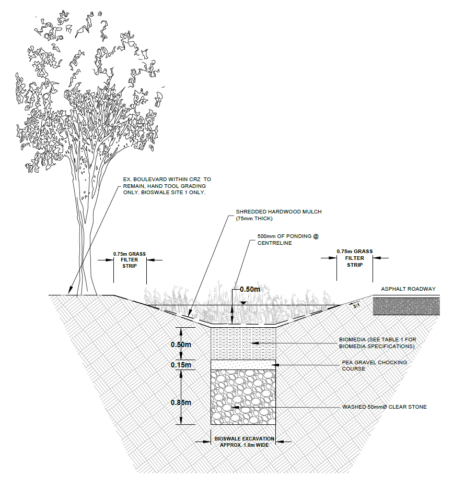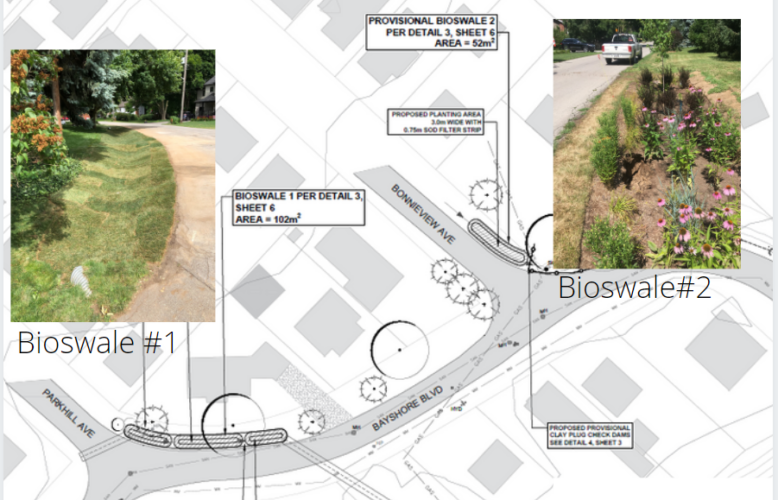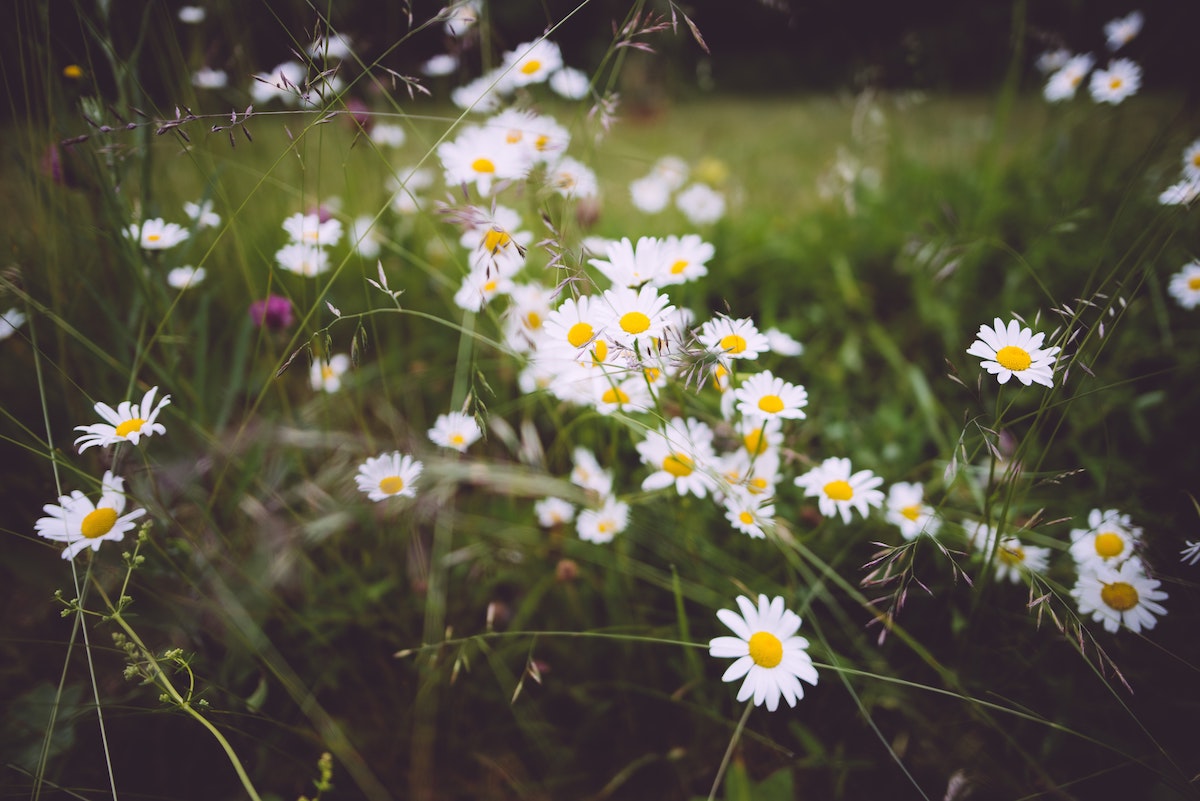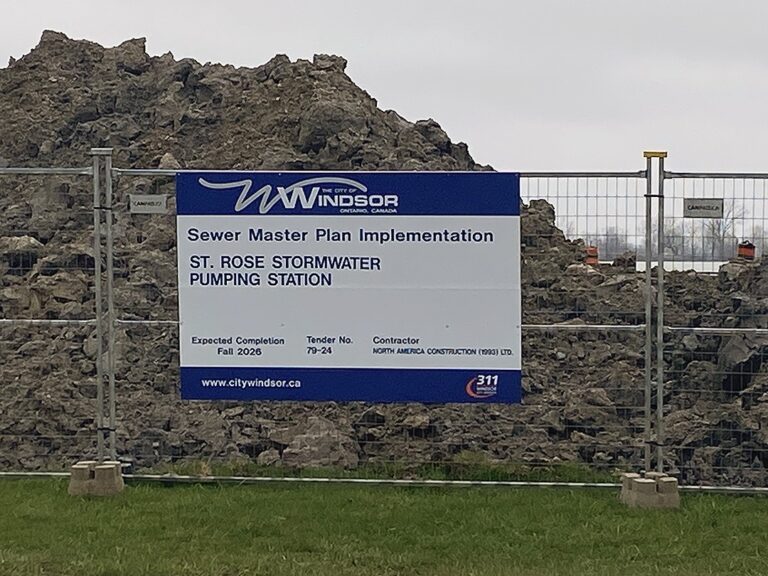When it rains, the ground acts like a sponge, absorbing much of the downpour, providing essential nutrients for the plant life tucked in the soil’s grasp. In urban environments, the proliferation of impermeable surfaces, from rooftops to paved parking lots, impedes the infiltration of rainwater into the ground, creating stormwater runoff that flows through sewers, channels, and streams, before being discharged into larger bodies of water. On its journey to local waterways, the stormwater picks up and transports sediment, pollutants, and contaminants, such as commercial and residential pesticides and fertilizers, industrial chemicals, road salts, and household products, as well as pathogens, such as bacteria and viruses.
In the watershed that Conservation Halton oversees, that body of water is Lake Ontario.
When the Ontario government announced funding to improve the health of the Great Lakes in 2016, Conservation Halton identified a number of priority areas that were in need of groundwater quality improvements and quickly determined that Lake Ontario was a great place to start.
Located on the shore of Lake Ontario is Brighton Beach, a community in Aldershot, within the city of Burlington. Comprised of approximately 75 homes on Bonnieview Avenue, Parkhill Avenue, Bayshore Boulevard, and West Oval Drive, Brighton Beach offered the perfect location to focus efforts on reducing contaminants before they reach the lake.
As a solution, Conservation Halton partnered with environmental engineering companies, Aquafor Beech and Rubidium Environmental, the City of Burlington, and the community members of Brighton Beach to design and implement two bioswales.
Bioswale basics Bioswales are shallow landscaped depressions that are meant to capture, infiltrate, and redirect stormwater. A form of green infrastructure that helps slow water runoff while providing the opportunity cleansing and infiltration via installed media layers (soil, gravel, sand, plants), bioswales also create habitat for pollinators, birds, and local wildlife. They can be tailored to fit a specific location’s needs, and can also be customized with the region’s native plants.

The Brighton Beach bioswales
Prior to the bioswales’ installation, surface water in the area was tested after three rainfalls. The findings concluded that contaminants such as phosphorus, aluminum, cobalt, copper, iron, phosphorus and zinc, were higher than the Provincial Water Quality Objectives, and that the pH level was lower than the provincial limit.
Reducing the contaminant and sediment loads entering Lake Ontario, and Hamilton Harbour in particular, will reduce environmental stressors on species at risk, including, Blanding’s turtles, musk turtles, American eel, and redside dace.
The process
Modelling software was used to calculate the volume and direction of surface water in the area, and this information was then used to design customized media filtration systems for the bioswales. Both bioswales were tested for minimum and maximum expected water volumes and the findings suggested that in a 25-millimetre rainstorm, they would be able to reduce stormwater runoff by nearly 60 per cent.
In 2018, the first of the two bioswales was installed. At 52 m2, it was thickly and diversly planted with drought-and-flood-tolerant native plant species, including, Joe Pye weed (Eutrochium purpureum), marginal wood fern (Dryopteris marginalis), blue wild indigo (Baptisia australis), and red maple (Acer rubrum). The second, larger bioswale (102 m2) was installed in 2020, and was vegetated with turfgrass to maintain the appearance of lawn.

It takes a community
One of the elements that made this project unique was that members of the Brighton Beach community were involved every step of the way, from assessment to installation.
In 2016, prior to the design and construction of the bioswales, Conservation Halton hosted a series of workshops for Brighton Beach community members to learn about stormwater management, green infrastructure, and native plant landscaping. Homeowners were provided with rain barrels, native plant kits, and information on and access to financial incentives to build their own stormwater infiltration systems on their properties.
At first, community members were hesitant about the implications of home-based stormwater projects, as this approach was relatively new, but after the bioswales were created and their effectiveness proven, interest and support quickly grew. One member of the Brighton Beach community planted a rain garden on their property, and another made the switch to a permeable driveway to help address flooding concerns.
“We know that non-permeable driveways and roadways result in flooding, and with the increasing amount and intensity of rainfalls, it’s important for us to focus on green infrastructure to tackle these issues,” said Wilfred VanderVelde, a Brighton Beach community member. “It is also critical that swales are constructed correctly. The bioswales in Brighton Beach were designed and constructed with proper slope graduation and placement of aggregate, so that water drains effectively.”
Erin Mallon, Landowner Outreach Technician at Conservation Halton, also added, “It is not only my role to educate homeowners about green infrastructure, but also to prove that it works. Without a real-world demonstration of the bioswales in Brighton Beach, it would not have been possible to earn the confidence of the residents to take on their own projects. The hope is for green infrastructure to catch on, so that that one day it will be as common to have a rain garden as it is to have a barbecue.”
Drinking water protection
The bioswales of Brighton Beach continue to have a positive effect on the environmental health of Lake Ontario, but they also have a positive impact on local drinking water.
Lake Ontario provides drinking water to more than 9 million people in the province, from Niagara to Kingston, and even as far north as Peterborough. Before that water pours through residents’ taps, it is transported to a water treatment plant where sediment, pollutants, and contaminants are removed. While water purification is an important process, it’s also a delicate one, and treatment plants can be unprepared for a sudden increase in a particular contaminant. Preventing surface water from being contaminated and ensuring there are opportunities for ground water filtration are necessary processes to help alleviate the load on water treatment plants.
The National Water Research Institute in Burlington named urban expansion as one of the greatest threats to drinking water quality in Canada. And as our communities grow, there are more home and business owners spraying their lawns, more drivers leaking oil on the roads, more sidewalks being salted, and more industrial pollution being produced. This growth means that more permeable soil is being replaced with impermeable, paved surfaces which then increases the flow of surface water runoff.
Green infrastructure, like the bioswales in Brighton Beach, serve as one of the solutions that municipalities are starting to embrace in response to this urban growth so that communities can continue to develop smartly by using the natural environment to support instead of viewing it as a hinderance.
Funding for this project was provided by the Government of Ontario and the RBC Blue Water Fund.
Erin Mallon is the Landowner Outreach Technician, and Erica Scime is the Creative Content and Communications, with Conservation Halton.









